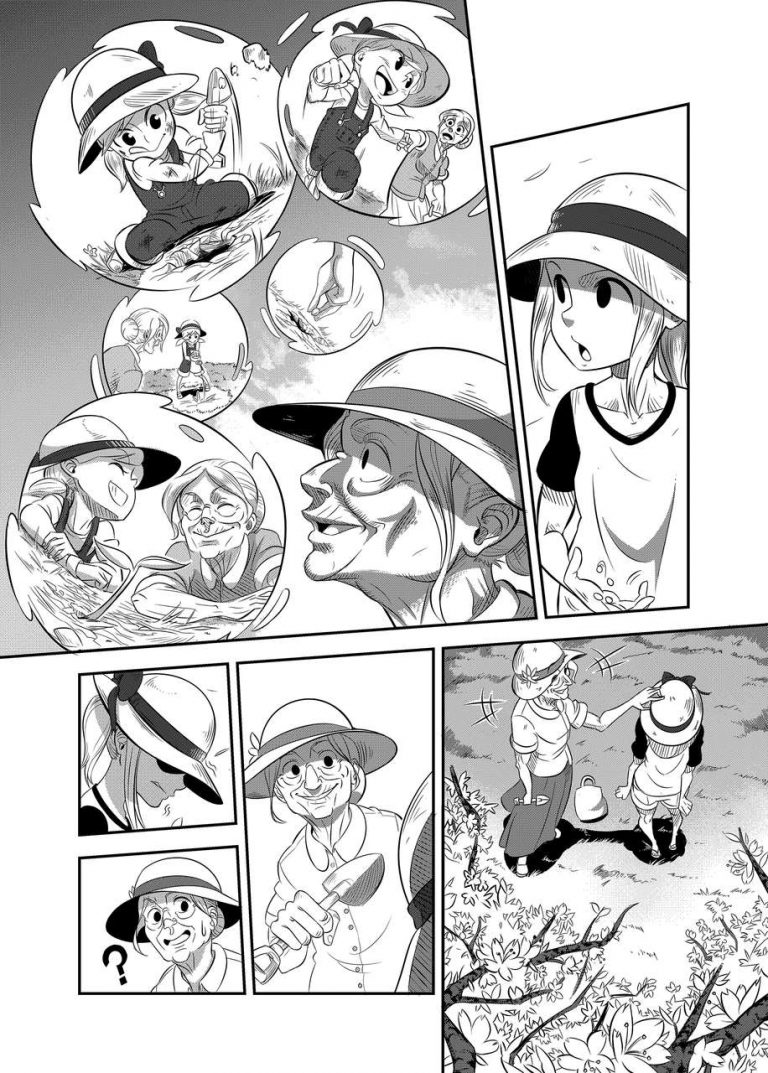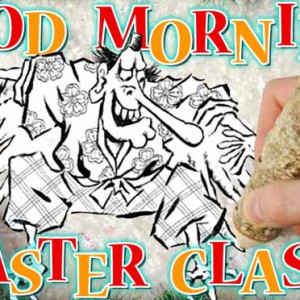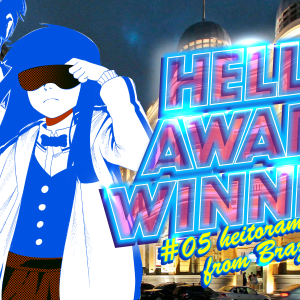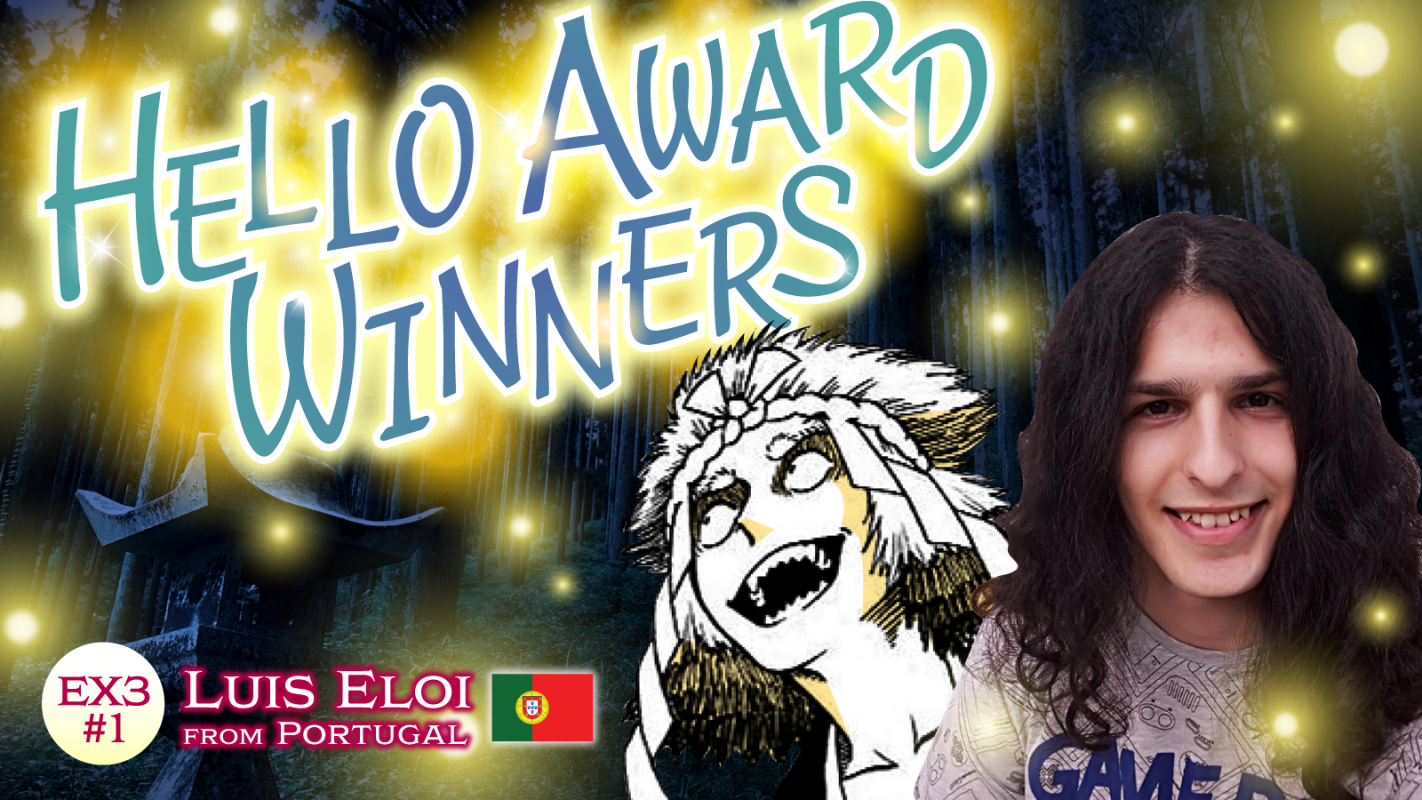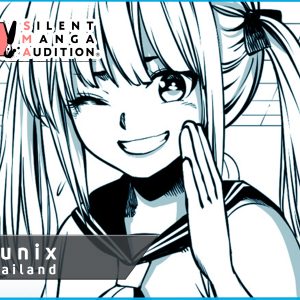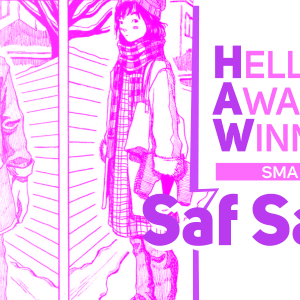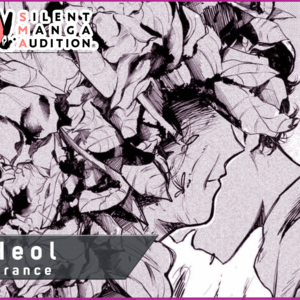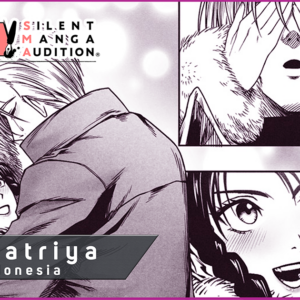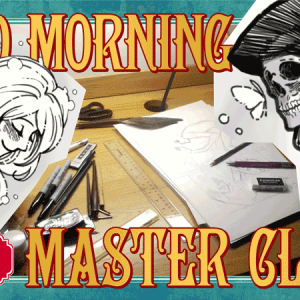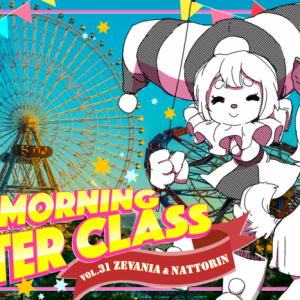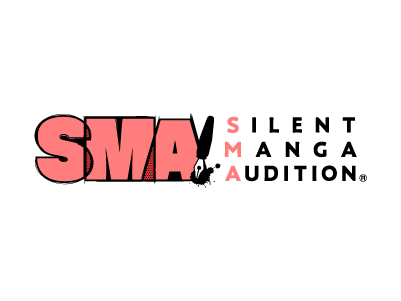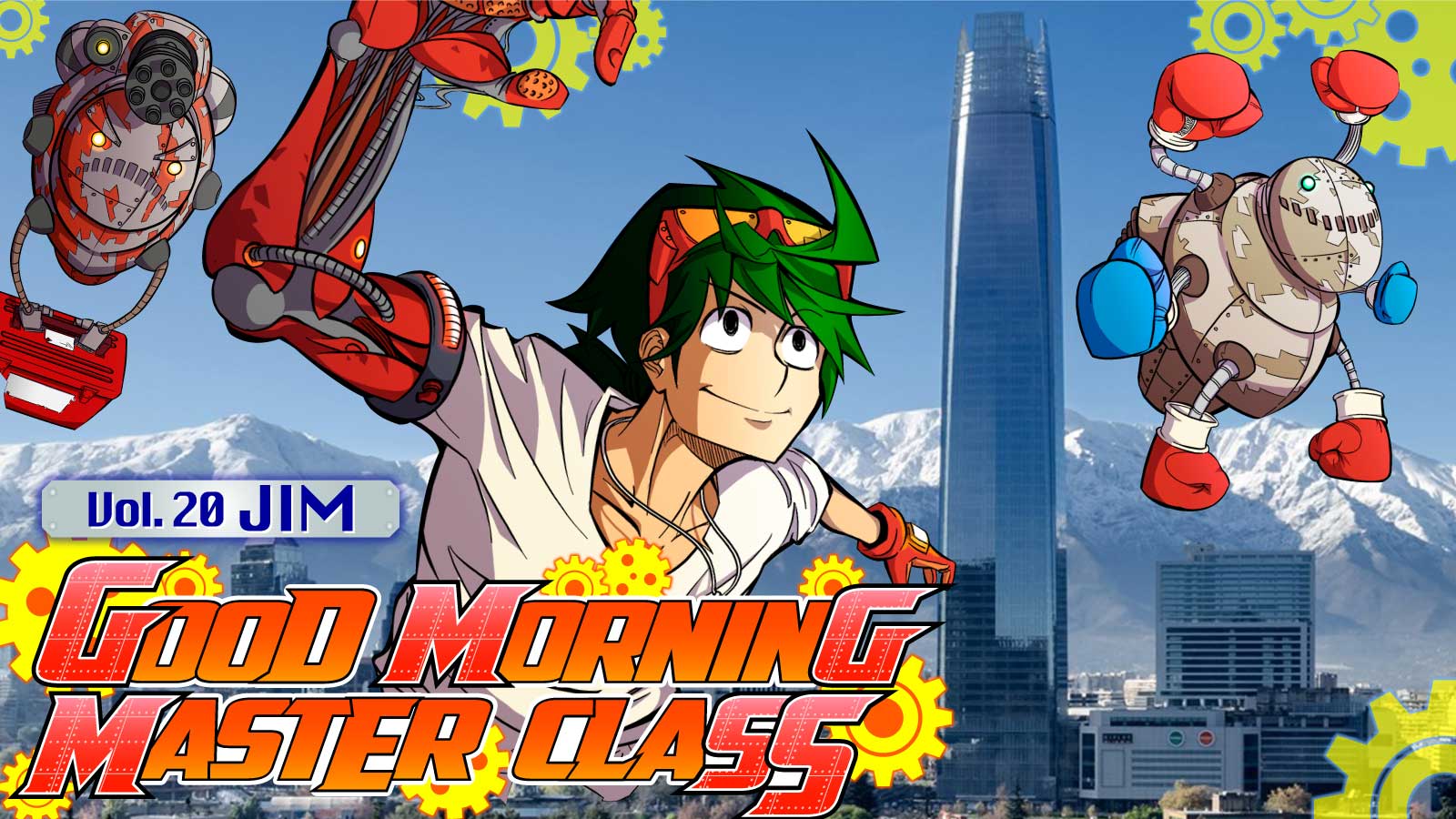
This week’s SMA MASTERCLASS 2017, the 3rd year fresh members who will be coming to Tokyo in 2017, is none other than JIM☆
He finds creativity in even the smallest of places around him and gives them life!
He took us to his laboratory to show us how we can make life from nothing 😉
Good Morning JIM!
INTERVIEW WITH JIM. “I always carry a small notebook and a pencil with me, because inspiration can come anytime, anywhere.” -About where you live. Anything the world should know about the place? I live Santiago (capital of Chile) a noisy and fun city. It is the largest urban nucleus of the country has an extensive amount of shopping malls, art galleries, theaters, various museums, and parks that are true natural attractions. But, the main characteristic that emphasizes to this city is warmness and the kindness of its inhabitants! There is also the tower called “Costanera Center,” the highest skyscraper in Latin America! There is a viewpoint at the top of the tower where you can see the whole city from there It’s a really amazing sight! It also has a mall that I often go to to see a movie on the top floor, eat in some restaurant, or just buy what I need. I also like going to the Starbucks. They are great places to relax and make ideas flow while I drink coffee. God! How I like coffee!
-Your workplace, please show us! Any additional place you visit for inspirations?
My workspace consists of a desk where I have my notebook and my graphics tablet, tools that I use to work digitally. It is a small little space, but I manage to be able to draw in the most comfortable way possible. Apart from that, I have a shelf where the rest of my drawing tools are, nibs, pens, inks, sheets, erasers, watercolors, markers pens, etc. I always keep all my tools in one place, visible and at my fingertips for when I need to draw in the traditional way—I do not have to look around the house for every thing I need.
I spend most of the day in my workspace, but there are times when spending so much time in the same place it blocks my creativity and I can not even draw a sketch of a face. So sometimes I go out walking the city to clear my mind and I always carry a small notebook and pencil with me, because inspiration can come anytime, anywhere.
-Any memorable events, in your manga creation career?
“To express what I lived on that trip I can summarize it in a few words, IT WAS EPIC!”
A memorable event undoubtedly was when I went to Japan thanks to the SMA-EX1 award. That trip was fantastic! I was able to try the delicious Japanese food (the udon is the best !!), I visited tourist places I wanted to see since I was a kid! I had the pleasure to share and converse with real professional mangakas! Such as the great Tsukasa Hojo sensei, whom we visited in his studio and he kindly allowed us to see some original pages from a chapter of his manga “Angel Heart” that he was drawing at that moment!! Or also Ryuji Tsugihara sensei! Who gave us a great demonstration of how to use acrylic paints. But, what I liked most about this experience was being able to share with the friendly children of Fukushima Prefecture, especially the moment when a little girl won a drawing made by me playing Rock–paper–scissors. When I saw her face full of happiness for having won that prize and seeing how important it was to her win that simple drawing, my soul was filled with happiness.
To express what I lived on that trip I can summarize it in a few words, IT WAS EPIC!
-Any artist who had effect on your manga style? Even Respect?
The evolution of my manga style has been quite a metamorphosis! Since I started to draw I have been influenced by the style of various artists like Tsutomu Nihei, Katsuhiro Otomo, Yoh Yoshinari, and Yusuke Murata. I also went through the phase of wanting to draw with the style of Eiichiro Oda! But, in these last few years the artist who has had more effect in my style of drawing has been the mangaka Inio Asano.
My style of drawing was composed through all those artists that I loved. If I liked something from their style, I tried to imitate it. But, they not only influenced my drawing style, they also influenced the type of stories that I do. Early Asano is one of those mangaka. I am fascinated by the bittersweet stories that he creates. His works overflow with a kind melancholy joy that is unique! This is something I want to capture in my manga. I hope to become as good as him.
-Any specific titles that influenced you? Movies, Dramas, Games?
The films and anime series by Katsuhiro Otomo and thanks to his movie “Steamboy,” I have become even more interested in the literary genre steampunk.
Also the whole Metal Gear Solid saga of video game. Infiltration missions, extravagant characters, a surprising history and above all, combat vehicles with advanced robotic technology and bipedal tanks with the ability to launch nuclear weapons from any type of terrain. It has everything I would like to do in a manga!
-Did creating manga have any effect on your life? In what ways?
It has changed the routine of my life in a radical way because I had to postpone my university studies and many other things to be able to have more time and focus only on my dream of living by doing what I am most passionate about. This completely changed my way of thinking. Now I can not imagine doing anything else, the manga is my life!
-Show us the tools you use for drawing! Any tips to share?
Most of the works I create now are completely in digital so my main drawing tools are my HP notebook and my graphical tablet Wacom Intuos Pro Medium, I use the programs Adobe Photoshop CC, SAI, or CLIP STUDIO PAINT. For the traditional drawing I use a mechanical pencil 0.5 to draw rough lines, inking the pages of manga with MARU pen and SAJI pen, to paint my works I use watercolor, acrylic, or markers. And the screen-tones I do totally in digital.
I like to use the saji pen because it is thinner and does not leave as much ink on the paper as the G pen. But, another person may say otherwise. A serious tip that I could give would be that no matter what graphic tablet you buy, they are all the same. The most expensive will have screens or buttons to speed up your work and you will have less delay’s. But, if you know how to use a lower end graphic tablet you will get the same result in your illustrations as using a more expensive graphic tablet.
-Where do your CHARACTERS come from? / Inspirations, imaginations and influences
“It is amazing how many ideas I can get out of a simple dream!”
My characters usually come from the inspiration of the moment, from my personal tastes, also from my subconscious when I sleep. It is amazing how many ideas I can get out of a simple dream! Using visual references also helps me take both physical and psychological characteristics of real people or other fictional characters. I have come to create characters even from the silhouette of a crumpled paper and stains on the floor. Most important of all this is to be creative!
I think we’ve all seen figures in wood stains or cracked walls, since I was a little kid I’ve always seen drawings everywhere!
I applied this to my method of creation when I have no inspiration and I do not know what to draw. I crumple a piece of paper and visualize all kinds of forms that are created in their folds. This technique is very effective when you run out of ideas! (The silhouettes and shapes I see are not details, that’s why the sketches are not so well defined, but based on these sketches, then I make my final drawings)
“Most important of all this is to be creative!”
-We say “Breathing life into characters” is the magic of manga artists. Tell us how YOU cast that magic!
I do not know if it is unconscious but always term expressing my own experiences of life in the life of my characters. The things I have seen, the adversities I have had to face, the emotions I have experienced, and the people I have met. More personality of the character gives them a more real and unique life.
-Please say ONE THING about “Manga NAME (DRAFT STORYBOARD)”
“Not doing so would be just like baking a cake without following the recipe. The result will be inedible.”
At the time of creating a manga, the storyboard or manga NAME is tremendously necessary! Since this generates a prior and structured vision of what you plan to tell, not doing so would be just like baking a cake without following the recipe. The result will be inedible.
– How do you schedule your work? Any good/horror stories to share with us?
It depends on the duration of each manga. My creation process is simple, first I think about the concept of what I want to do and then I dedicate myself to collecting information about the topic to be treated. For that, I watch documentaries, movies, I read books, or look for information on the internet. This helps me a lot to have a clear vision of the story that I will tell.
Then comes the moment of planning where I create the main conflict in the story which the main characters must solve. Based on the action of each character and in the situations in which they will develop, I visualize how they will develop to the climax of the story. Once I’ve written the story I start with the manga NAME to structure the vignettes and the dialogues of each page.
When the storyboard is ready, it is only necessary to start with the more mechanical work, sketching the final pages, then the inking and finally I put the screentones and the dialogues.
I draw very slowly and that’s a problem because it takes me too long to finish the pages and sometimes I do not sleep for days. That’s why I have to plan my time well. Luckily for me, I’ve always reached the delivery date. When I am drawing I postpone many other things, like going out with friends or spending time with the family. But, this is something that I can not handle, it is what I draw manga is.
-Any other good tips to share?
It is impossible to draw what you do not know or what you have never seen, so it is important to learn to visualize everything around you, understand how each thing works! And gather all that information, for when the time comes to express it on paper you can draw it easily.
“It is important to learn to visualize everything around you, understand how each thing works!”
-Is there any moment you felt “Ah I’m glad I entered this competition”?
Many times! When I participated in the SMA04 and was among the list of winners I felt that way!
I feel this way every time I see the diploma that Mr. Nobuhiko Horie gave me in my hands for having won the Grand Prix in SMA-EX1 Sakuramori
And now, I feel the same way for having been able to win a position in the Master Class!
I am infinitely grateful to the SMA and I can say it with all certainty I’m glad I entered this competition !!
-Specific areas of focus, when creating your entry?
I focus on the emotions of the characters and I create conflicts with which people can empathize with them, also on a surprise climax! So that when the readers finish reading the manga they are left with a pleasant feeling of wellbeing.
I almost always use real conflicts that I have seen or experienced.
“In Beyond Sunlight” I represent myself as the main child. I wanted to express how I felt all those fears I had at some point in my childhood, the fear of the unknown! And how I had to get up, arm myself with courage and face them face to face.
For “Seeds,” I was inspired by the relationship that my mother has with her granddaughter, even though they are always arguing, they both love each other!
And in “The Best OwO,” I was inspired by a childhood friend, who explained to me that her mother did the impossible to get her that toy she longed for her birthday.
-Any tips to fellow SMAC! contestants?
“A good story is nothing if you do not know how to communicate it!”
The visual communication is very important in a silent manga. Since this one does not have dialogs it forces the reader to use his mind to form the story based on the signs he sees in each drawing. Each vignette you draw must give an easy meaning to understand so that the one who receives this information can be able to interpret it. For that, focus on drawing good facial expressions, body language, signs, indicative logos, and everything that helps you to convey your ideas correctly. A good story is nothing if you do not know how to communicate it!
-How do you feel about joining the SMA MASTERCLASS?
“I will fulfill my dream at all costs!”
I am tremendously excited!! But at the same time a little restless. Being part of something as big as the Master Class means all new challenge for me. But, I like the challenges! I want to fulfill expectations that everyone has put in me and I want to prove to myself that I can persevere in spite of how difficult this can be. I will fulfill my dream at all costs!
-Any tips you received from a SMAC! Editor? How about Other editors?
When I was in Japan sharing with the editors I learned a lot from all of them, especially from the editor Taiyo Nakashima. He told me how the manga industry works in Japan and also I taught myself some essential advice that I can use to the moment to create a manga. I know that some winners of the Master Class have already talked about the narrative technique “Ki-Sho-Ten-Ketsu” that Taiyo taught them and I will not be the exception either. It really works!!
-What do you wanna create, from now on?
Now that I have this opportunity, I have all the desire to start working soon in the serialization of a manga for SMAC. I have several stories I would like to tell, but there is one that I have a special affection for. The story is a one-shot that I published in Argentina called “Sand Damp.” It’s the story of a boy digging well named Ringo, who has spent 3 years searching for water in the desert in order to end the war between cities that began due to the scarcity of this vital resource for life. It’s a very simple story! That’s why I now want to give you a change of focus and start from scratch, with a whole new story for Ringo!
-Anything else the world should know about you?
My alter ego is a Long rabbit with a shirt
Thank you for your time JIM senpai! We can’t wait to read what happens to Ringo in “Sand Damp”! The Incan Empire once sprawled across Chile. Now, a new creative dynasty is about to set its roots in the region with manga. We want to see the manga these pioneers will make as they join the Master Class!! Please show your worth, by joining & start creating for SILENT MANGA AUDITION® today!
INTERVIEW WITH JIM. “I always carry a small notebook and a pencil with me, because inspiration can come anytime, anywhere.” -About where you live. Anything the world should know about the place? I live Santiago (capital of Chile) a noisy and fun city. It is the largest urban nucleus of the country has an extensive amount of shopping malls, art galleries, theaters, various museums, and parks that are true natural attractions. But, the main characteristic that emphasizes to this city is warmness and the kindness of its inhabitants! There is also the tower called “Costanera Center,” the highest skyscraper in Latin America! There is a viewpoint at the top of the tower where you can see the whole city from there It’s a really amazing sight! It also has a mall that I often go to to see a movie on the top floor, eat in some restaurant, or just buy what I need. I also like going to the Starbucks. They are great places to relax and make ideas flow while I drink coffee. God! How I like coffee!
Thank you for your time JIM senpai! We can’t wait to read what happens to Ringo in “Sand Damp”! The Incan Empire once sprawled across Chile. Now, a new creative dynasty is about to set its roots in the region with manga. We want to see the manga these pioneers will make as they join the Master Class!! Please show your worth, by joining & start creating for SILENT MANGA AUDITION® today!


















